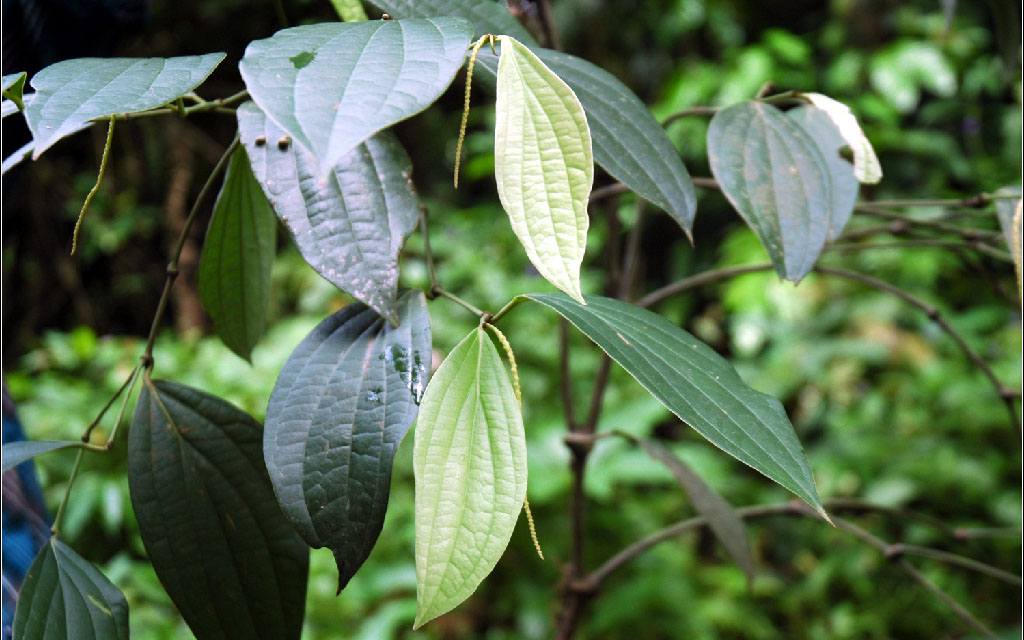|
P.nigrum
| Botany: | A stout, glabrous climbing shrub - the common black pepper. Perennial climber, climbing by means of ivy-like roots which adheres to the support tree. Vigorous vine, old stem thick and rough, branches numerous, runner shoots arise from the base.
Leaves simple, alternate, petiolate, thick, coriaceous, glabrous, shape much variable, commonly ovate elliptic or elliptic-lanceolate, cordate; leaf margin even or wavy, size ranges from 10-20 cm in length and 5-15 cm in width, base round, acute or cordate, tip acuminate, lateral ribs two or three pairs, prominent, the uppermost one 1-2.5 cm above the leaf base, upper surface dark green to light green, lower surface dull green; petiole ranges from 0.9-6 cm in length, grooved, pearl glands (wax glands) present on the under surface of leaves and on young shoots and petioles.
Spike filiform; pendulous, young ones green or whitish green, or light purple; mature ones green, pale purple or pale yellow. Unisexual in wild and bisexual in cultivated, spike length varies up to 23 cm. Peduncle glabrous, bracts oblong, decurrent, sessile with free upper margin, develop in to a free shallow cup in female spikes, rachis and bracts glabrous; stamens two, anther dithecous, carpel single, ovary spherical, style absent, stigma 3-5 lobed. Fruit usually globose, green when young, changes to red on ripening, seed mostly spherical, pungent or bitter. |
| Keyfeature: | Bracts cupular, decurrent at base | | Distribution: | Found extensively in the evergreen forests of Western Ghats and in the adjoining areas, almost from sea level up to an elevation of 1300 m MSL., largely cultivated. |
| |  |
|
|








